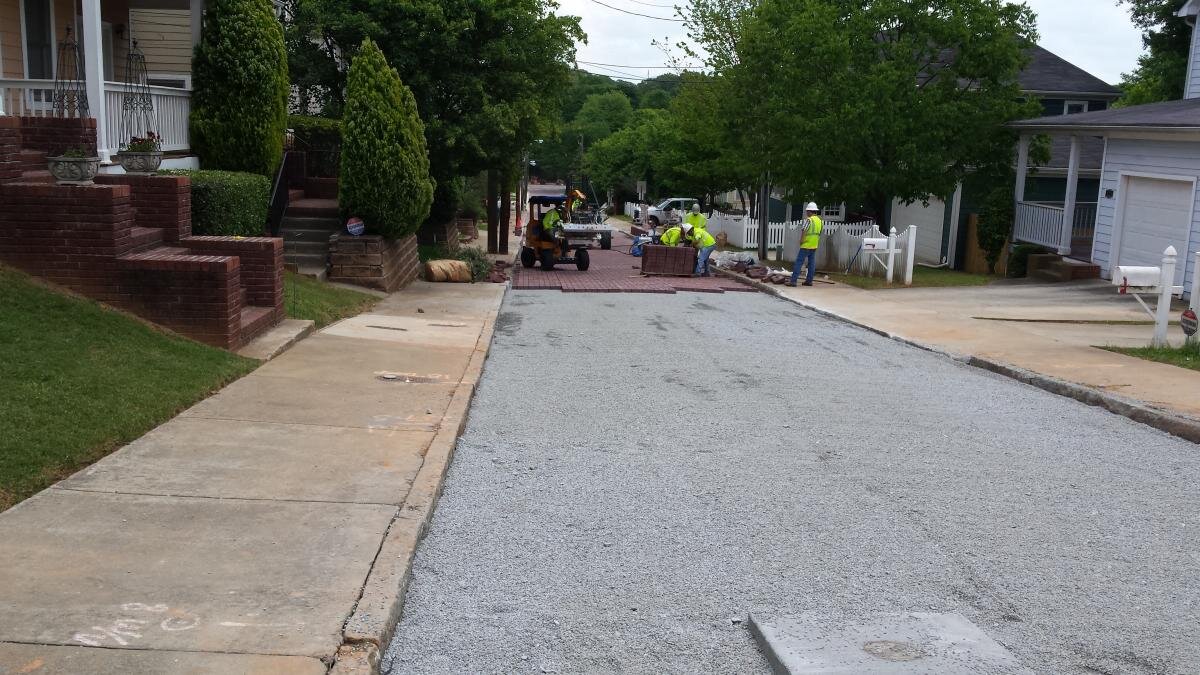Couldn't Stand the Weather
by David Smith, ICPI Technical Director
Mark Twain said, “Everybody talks about the weather, but nobody does anything about it.”
Global climate change might be altering the implications of Mr. Twain’s saying because we are likely doing something to the climate and maybe something about it. While the causes and effects of climate change receive endless debate in scientific and political spheres, regional-scale rainfall patterns are changing for certain. The result has been wetter weather in some parts of North America, drier in others.
The weather changes have been so dramatic that rainfall statistics defining storm recurrences are seeing realignment. A hypothetical example explains this shift. Say there are 80 years of storm data and some indicates that very occasionally, a city receives five inches rainfall in 24 hours. Some statistics are run and they conclude that the city has 4% probability of that rainfall depth occurring in any given year. So it’s called a 25-year storm. But data gathered over the past two decades now indicate a 10% probability. So that rain event has shifted to a 10-year storm recurrence. The old 10-year storm with maybe three inches of rain is now five inches.
This shift directly affects cities because storm sewers back up and can’t immediately drain the additional water. When that happens, it can end up in someone’s basement. Besides property damage, the city can be liable for damages. Storm sewers originally designed to manage a 10-year storm are now obsolete as confirmed by revised rainfall statistics.
Hurricanes plague the East, tornadoes the Midwest and South, and earthquakes the West. Because of natural disasters like the earthquakes in Northridge and Loma Prieta, and Hurricanes Katrina, Irene and Sandy, governments at all levels are seeking resilient designs and technologies to resist excessive wind, rain and tectonic plate movements. Resilient infrastructure resists these onslaughts from nature by designs that minimize damage to private property and society’s productivity. As urban infrastructure is rebuilt, resilient technologies and designs are increasingly included.
One city implementing resilient infrastructure is Atlanta, GA. It recently completed the Southeast Atlanta Green Infrastructure Project. Infrastructure renovation involved replacing century-old water lines, storm and sanitary sewers in two neighborhoods. The ‘green’ portion reduced stormwater runoff, a fundamental goal in most GI projects, with permeable interlocking concrete pavement. Atlanta went beyond reducing runoff. It installed around 700,000 sf (65,000 m²) of permeable interlocking concrete pavement with enormous water storage capacity to reduce increasing flood events.
According to Todd Hill, P.E., Atlanta’s Director of Watershed Management, the pavement stores about 7 million gallons. That approaches one million cubic feet of water in over 10 Olympic-sized swimming pools. As an extra bonus, maybe a fourth of that water is infiltrated back into Atlanta’s clay soils. A portion of the $66 million invested will be returned in spared litigation costs, not to mention increased property values and resulting taxes.
In their present state, many urban drainage systems simply can’t stand the weather. In response, resilient urban infrastructure is an intentional public investment goal. As they rebuild, cities and neighborhoods can resist bad weather by providing permeable pavements that control flooding while remaining un-flooded and useable during the worst storms. Atlanta certainly magnifies and affirms the role of permeable interlocking concrete pavement in resilient infrastructure.
Be on the lookout for the release of the ICPI Case Study, Atlanta's Resilient Green Infrastructure with Permeable Interlocking Concrete Pavement.
To read more blog posts, visit the ICPI Tumblr(link is external) page.





